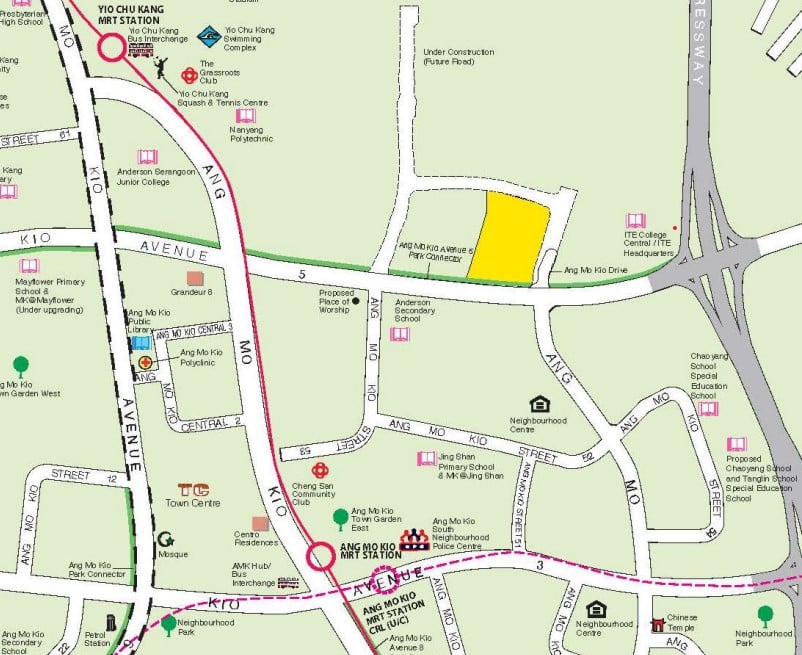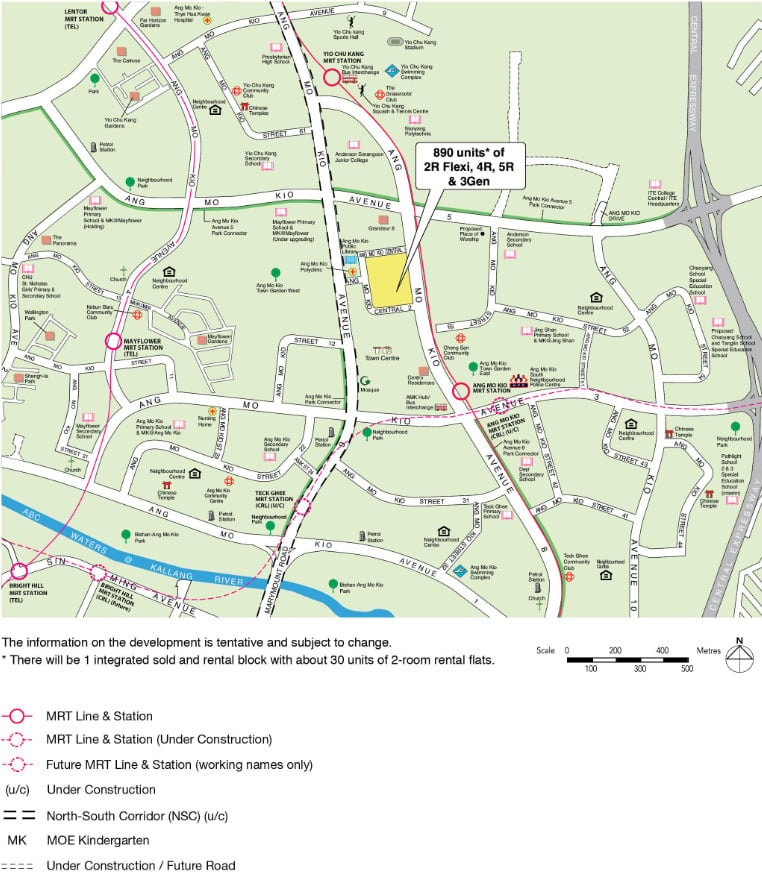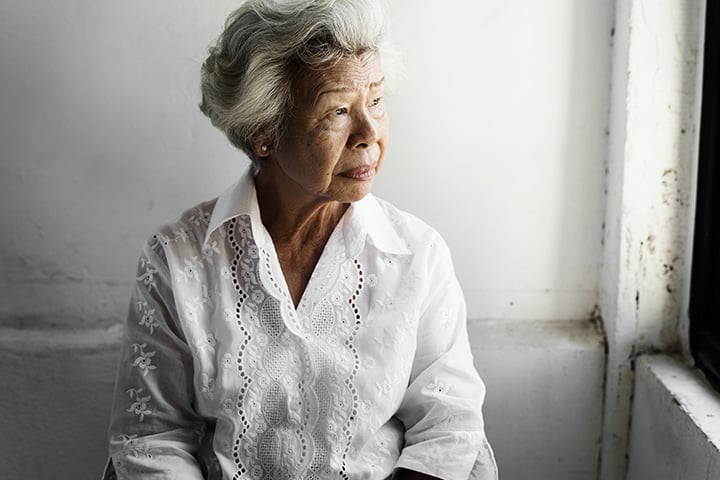For a long time, to have your flat SERS-ed is like getting a windfall, akin to striking TOTO or 4D. Through the scheme, the government acquires HDB flats from owners for redevelopment. In return, these owners are compensated and get an option to buy a new flat with a fresh 99-year lease at a subsidised rate.
It’s also another way of buying a new flat at a subsidised rate, other than through the BTO route.
And after the Minimum Occupation Period (MOP), owners can sell the flat at a higher price and earn a profit. Like this sale of a 5-room resale flat at City Vue @ Henderson, which at one point held the record for being the most expensive HDB resale flat sold.
Then came the Ang Mo Kio SERS announcement on 7 April. Almost two months later, it was announced that several HDB blocks in Woodlands will also be acquired. But the latter didn’t attract the same kind of attention and backlash.
Backlash on the Ang Mo Kio SERS
Like previous SERS exercises, some owners were unhappy with the relocation. Many have already paid up for their flats, but are now forced to move away from a place they’re already familiar with. Getting uprooted can be very stressful, especially for the elderly who just want to age in place peacefully.
There’s also a sense of unfairness. The designated replacement site at Ang Mo Kio Drive is relatively further away from amenities.

At the same time, there’s an upcoming BTO project at Ang Mo Kio Central, located next to a polyclinic and closer to Ang Mo Kio MRT. Compared to the BTO site, the designated replacement site is perceived to have a worse location.

(On the other hand, the designated replacement site for those affected by the Woodlands acquisition is near the Marsiling MRT. This may explain why the acquisition didn’t get as much backlash.)
One main reason for the backlash is that residents will have to pay around an additional S$100,000 to get a replacement flat of the same flat type at the designated site.
For instance, the estimated compensation for a four-room flat is S$380,000 to S$450,000. On the other hand, the estimated selling price for a similar flat type is S$438,000 to S$563,000.
So the estimated compensation is not enough to pay for the replacement flat.
On top of that, many of the residents are seniors. Their age makes it harder for them to get a loan to pay for the new flat.
According to HDB, the market compensation for the previous SERS exercises had generally been enough to cover the purchase price of the replacement flat. As the flats were younger when they were acquired, the owners had received a higher compensation.
National Development Minister Desmond Lee added that the flats in the previous SERS exercises had on average around 70 years of remaining lease. On the other hand, the Ang Mo Kio SERS flats have around 57 years of remaining lease.
This explains the relatively lower compensation this time round.
The backlash eventually led to MND introducing two additional options for those affected by SERS, starting with the Ang Mo Kio SERS:
- 50-year lease replacement flat at the designated replacement site at Ang Mo Kio Drive
- Lease Buyback Scheme for the existing flat, allowing owners to monetise their flat and use the market compensation for the lease retained to get an equivalent replacement flat with the same lease
Given what’s happened with the Ang Mo Kio SERS, we take a look at the future implications it will have on future SERS
(HDB has previously said that only 5% of the flats here will be eligible for SERS. And many of these projects with high redevelopment potential have already been SERSed. So we will be seeing fewer SERS exercises in future.)
1. More calls for a change in the SERS compensation
As mentioned earlier, after the Ang Mo Kio SERS announcement, a lot of people voiced their unhappiness and frustration.
Some have also asked for the valuation and compensation to be relooked, with some residents starting petitions addressed to PM Lee on the issue.
Many suggestions were also proposed, such as having shorter lease options and offering the Lease Buyback Scheme for those affected by SERS, which were eventually offered as additional housing options.
More importantly, it’s a sign that the government had considered these concerns and was willing to make adjustments for the owners.
The flats in future SERS exercises will be older, so the compensation will be lower. This also means owners will probably have to top up to get a similar-sized replacement flat.
Likewise, the owners will be older and face difficulty getting loans to get a replacement flat.

Given that the government made some changes this time, it could encourage people to voice for more change, such as the SERS compensation.
According to HDB, the compensation approach has remained the same since the first SERS exercise in 1995. But perhaps, given what’s happened with the Ang Mo Kio SERS, maybe it’s time to relook at the compensation approach.
Perhaps the owners shouldn’t just be compensated based on the remaining lease tenure, but also on the potential value of the land.
After all, the plot of land is getting acquired because it’s underutilised. Plus, the land tenure will most probably be topped up to 99 years for the subsequent development on the site.
2. Distortion in price and valuation for flats in the replacement site
While many have welcomed the additional housing options, analysts have also pointed out the possible implications of the 50-year lease replacement flats.
Unlike the short lease 2-Flexi flats, owners can sell these 50-year lease flats on the resale market after finishing their five-year MOP.
This also means that we will eventually see flats with 45 years of remaining lease and those with 94 years of remaining lease from the same project (or even next to each other) being put up for sale.
Because this will be the first time we will have flats of the same age but different leases on the resale market, we can expect some distortion in the price and valuation for these flats.
In general, factors such as the age of the unit, condition and past transactions affect property valuation.
So there could be instances where the shorter-lease flats will be valued lower due to the remaining lease, but may be priced higher due to their age.
At the same time, the flat with the longer lease may be valued lower as the nearby transactions (including the shorter-lease flats) are taken into account as well.
3. 50-year lease flats will be seen as investment flats
Another knock-on effect of the 50-year lease flats is that people may buy them for investment purposes, instead of buying for their own stay. To a certain extent, this defeats the purpose of providing the shorter-lease option, which is to provide a more affordable replacement housing for the elderly.
Through SERS, only those aged 45 and above can buy these flats. This condition ensures that these residents will have a home that covers them till age 95.
At the same time, they can put up the 50-year lease flat on the resale market or rent out the unit after the five-year MOP. (There’s no age restriction for the resale buyers.)
Similarly, resale buyers can sell the flat or rent out the unit after the five-year MOP.

Given the shorter lease, these flats will be sold at a lower price (through SERS and on the resale market) than those with the full 99-year lease. This is even as both flat types are of a similar age and condition.
This makes these 50-year lease flats a good investment unit. Despite the lease tenure and lower purchasing price, owners get to earn a similar rent.
The rental yield will be higher as well. Instead of the usual rental yield of 5 to 7%, it could be as high as 10 to 14% for these shorter-lease flats.
Any other implications of the Ang Mo Kio SERS? Let us know in the comments section below.
If you found this article helpful, 99.co recommends No more early MOP for SERS replacement flat owners, starting with AMK SERS and New HDB SERS flats less than 5 years old (i.e. near MOP) that have or will hit the resale market soon.
The post 3 implications the Ang Mo Kio SERS has on future SERS appeared first on .

